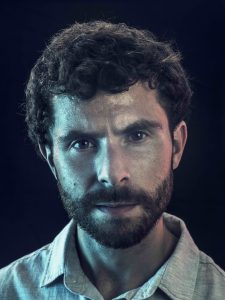Matthew Aucoin and the San Diego Symphony Lift Up Music’s Future in Both Past and Present Modes

Matthew Aucoin [photo (c.) Steven Laxton]
Aucoin’s repertory choices spanned the opening movement of Beethoven’s First Symphony to the first section of Andrew Norman’s 2013 “Play,” with an emphasis, however, on living composers: Kaija Saariaho, Steve Reich, Thomas Adès, Norman and Aucoin. Because applause was restricted to the end of each program half, this format allowed a deeper level of audience concentration, and the connections between works really stood out.
After the noisy, explosive, percussion driven textures of Norman’s “Play” prompted me to scribble “cacophony” in my notes, Aucoin slipped into Igor Stravinsky’s ”The Shrove-Tide Fair” from his 1911 ballet Petrushka. Lo and behold—Stravinsky had constructed uncannily similar dense, bustling textures filled with parallel rude crackles and slaps from the percussion section. His tunes were prettier—in the conventional sense—than Norman’s, but these composers were on the same path 100 years apart.
To my ears, the mysterious, quiet string murmurings that were abruptly interrupted with surprising, majestic full orchestra cadences in Thomas Adès’ “These Premises are Alarmed” from 1996 moved imperceptibly into the “Introduction” from Haydn’s oratorio The Creation, the composer’s bold 18th-century depiction of the universe’s chaos at the dawn of creation.
Aucoin opened his concert with an excerpt from Steve Reich’s early minimalist icon “It’s Gonna Rain,” based on a tape loop of a refrain from a street preacher’s passionate sermon about Noah and the Flood. After the work’s opening electronic barrage, Reich depicts the sounds of pigeons in the public square—San Francisco’s Union Square—where the preacher stands: delicate, fluttering flashes from the strings suggest the pigeons landing at his feet, followed by distant thunder form the low brass. Reich builds a throbbing street scene with the full orchestra capped by the excited iterations of three piccolos. A contemporary urban tone poem—not exactly Smetana’s “Moldau”!
Guest baritone soloist Rod Gilfrey infused Gustav Mahler’s song from his Rŭckert Lieder “Ich bin der Welt abhanden gekommen” with the poignant longing that throbs through these scant poetic verses. I was transported by Gilfrey’s existential angst and tonal beauty of the final phrase (in translation): “I live alone in my own Heaven—in my love and in my song.” Andrea Overturf set the mood for Gilfrey with her equally alluring English Horn solo that opens the song.
Gilfry offered two impressive solos from Aucoin’s opera about Walt Whitman, Crossing: the “Prologue” and “Crossing Brooklyn Ferry.” In the first, Gilfry quotes Whitman’s pregnant question to his readers of any era “What is it then, between us?” Having watched a 2017 concert version of portions of this opera on a You Tube clip from Santa Barbara, I was eager to wrestle with the poet’s probing ruminations.
Although Gilfry’s bold, rich baritone could have commanded the hall had Aucoin held back the full force of the orchestra, he indulged his thick, turbulent score at full tilt, making it almost impossible to discern Gilfrey’s words. Had the San Diego Symphony been in the pit of Civic Theatre, for example, Gilfry might have been able to sing over the orchestra’s sonic tidal wave. But arrayed behind him on the Copley Symphony Hall stage, he was clearly outgunned. Too bad, because both Aucoin’s rich, inventive orchestral score and his arresting vocal writing deserved our complete attention.
Other worthy selections on this live Spotify experience included the voluptuous themes found in Jean Philippe Rameau’s “Entrée de Polymnie” from his late opera Les Boréades, and a daunting but not at all superficial contest piece for solo cello by Kaija Saariaho, “Spins and Spells.” Guest cellist Coleman Itzkoff made a mesmerizing piece out of the barrage of dizzying themes sprinkled with fleet harmonics and other extended techniques.
I almost forgot—Aucoin ended the concert’s first half with a beautifully detailed account of the final movement of Jean Sibelius’ Fourth Symphony in A minor.
Responding to all of these contrasting stylistic challenges on a single program, the orchestra acquitted itself handsomely. On the podium, Aucoin proved a model of clear, vigorous direction. Elegance will no doubt be added by the time this 28 year-old composer/conductor hits this thirties.
This concert was presented by the San Diego Symphony in the Jacobs Music Center’s Copley Symphony Hall on January 25, 2019, and will be repeated on Sunday, January 27.

Ken Herman, a classically trained pianist and organist, has covered music for the San Diego Union, the Los Angeles Times’ San Diego Edition, and for sandiego.com. He has won numerous awards, including first place for Live Performance and Opera Reviews in the 2017, the 2018, and the 2019 Excellence in Journalism Awards competition held by the San Diego Press Club. A Chicago native, he came to San Diego to pursue a graduate degree and stayed.Read more…


